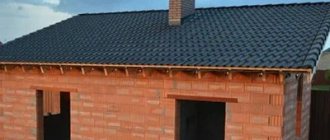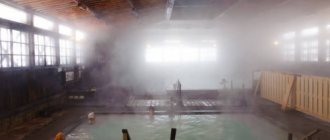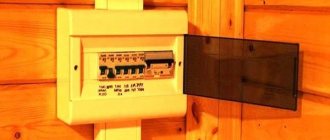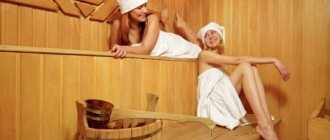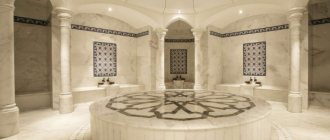Lining is a material that has been used for a very long time. Its first purpose was the usual lining of freight cars. Today it is not used in carriage building, but the name “lining” has been preserved, only its scope has changed somewhat. Now it is considered a good, modern material for cladding wall surfaces. Linden lining refers to materials that are as close as possible to natural wood. This is proven by a unique production method, using high-quality linden wood.
What is
Almost all factories in Russia, whose field of activity is the production of construction wood (timber, boards, logs), also produce the so-called “profiled moldings”. This is what lining, including linden, refers to. What is lining? This is an edged board with a thickness of 7-20 mm. The top layer (front surface) of each is planed. The average width of lime lining is 90-150 mm. This makes it possible to use it as finishing even in non-standard rooms.
All products of profiled moldings have a distinctive feature - a special type of fastening. Each lamella is equipped with two fasteners - a groove on one side, a ridge on the other. Therefore, linden linings are often also called plastic panels (if they are made from it) or MDF.
In the Russian Federation, the most common and popular types of lining are considered to be wooden, made from: linden, oak, pine, larch, alder.
Standard lining sizes
Lining is a thin cut of natural wood. Installation of the panels is simple, and the surface is beautiful. The standard thickness of these products varies from 12 to 20 mm. These values are enough to prevent the board from breaking or being pressed during installation. Size is also important when calculating the required volumes. Many people are interested in the question of whether there are standard sizes of lining. It is worth studying the features of the various types in more detail.
Coating characteristics
In addition to the variety according to the type of wood (this is one of the most important parameters of classifying qualities), each of the manufacturers also divides linden lining according to the following characteristics.
Humidity
The degree of humidity of the facing board can be natural and dry (the indicators of both should be within 10-15%). The difference between them is expressed in quality properties and cost. The dry variety will cost more, since the plant still undergoes an additional stage of processing - removing moisture. This type of lining is less likely to crack and warp.
Geometry and shape of profiles
Here the differences are based on the grade and type of lining:
- Standard;
- Block house;
- Eurolining;
- Under the beam.
Standard indicators (according to GOST) should be (in mm):
- Thickness – 12-25;
- Width – no more than 150;
- The maximum allowed length is 6000.
Gostov lining (12-16 mm thick) is used for finishing walls indoors. With large thickness values (16-25) - in the outer.
Eurolining
Euro lining made from linden is considered the most popular. It has constant indicators (in mm):
- Thickness – 12.5;
- Width – 60-160;
- Length – 1.8-6000.
Blockhouse lining
Material imitating galvanized logs. That is, its front side is not flat, like a regular one, but semicircular, convex. Used only for external wall decoration.
Under the timber
It has a second name - American, because it came to us from there - from overseas. It looks like a planed board equipped with tongues and grooves.
The side edges are cut and accurately emulate a wooden beam.
Tips and tricks
Calculation of the amount of lining should begin, knowing the length, width, height of the room in which the finishing will be carried out. The product of width and height will give square meters of area to be finished. This rule is valid if the area of usable area being trimmed is of the correct shape. If this is not the case, you will have to calculate the parameters of individual sections and then summarize the indicators. To calculate the amount of lining, you need to multiply the parameters of the indicators that relate to the room with the parameters of the thickness of the lining. If you need to find out how many panels are in one cube, you will have to multiply the length, width and thickness of the selected products. It is advisable to increase the obtained values by 10–15%, since the use of cladding parts is impossible without residues. The increased result will be useful for unforeseen situations.
For example, it is known that the length, width and thickness of one pine panel are equal to the following values: 125x50x2000=12500000. This value is in millimeters, but we need cubic meters, so we need to convert: 0.125x0.050x2=0.0125 m³. To calculate the number of boards in a cube, you need to divide 1 by the resulting value: 1/0.0125=80. This makes 80 whole lining panels. If the calculation results in a fractional number, it must be increased to the nearest whole number.
To calculate the number of square meters in a cube, you should take into account the area of one workpiece. To do this, you need to multiply the known section parameters: 0.125x2 = 0.25 m². It is known that there are 80 boards in a cube, which means 0.25x80 = 20 m² in one cube. To find out how much material is required to cover a room, for example, 5x5 meters, its total area must be divided by the area of one panel. It turns out that for the described example you need 5x5=25/0.25=100. For a room of 25 m², you need 100 pieces of standard-sized pine lining. If we take into account the price for a package of 10 pieces from 270 to 710 rubles, then the cost of the entire volume of material will be from 2700 to 7100 rubles.
It is also necessary to take into account the cost of additional elements, for example, corners, baseboards, etc. Decorating the room will be quite economical, but nevertheless beautiful and durable.
Benefits and Features
Linden lining is endowed with a lot of advantages and healing properties, which is why it is often used in lining the internal walls of baths. Among the advantages:
- Linden lining does not darken or deform under the influence of high temperatures;
- Its surface does not overheat or crack;
- Has little weight;
- It is very easy to install.
Having a high level of strength and durability, it is used not only for cladding walls, but also for floors.
The key advantage is the fact that even at high temperatures, resinous secretions do not form on the linden tree.
Thanks to all these properties, linden lining is often used for cladding ceilings and railings in bathhouses and steam rooms.
The front surface of the coating is very smooth, with a pleasant tint, and can have uniform transitions from yellowish to honey color. This makes the interior lighter, which has a beneficial effect on vision.
The only downside is the cost – it’s high.
But considering all the advantages, as well as the healing properties of the material, it’s worth it.
The secret of the right steam room
It is a woody plant in the form of large shrubs or trees.
The linden material is homogeneous, with a beautiful shine and an unobtrusive honey aroma. Its conditional density is 400 kg/m3, in a dry state it reaches 495 kg/m3. Linden wood is soft, viscous, light. Its color is white or pale yellow, but there are varieties of pink or light brown. The structure of the linden material is moderately expressed. Knots are found infrequently, and the annual layers are almost invisible. Due to the uniform distribution of moisture, such lumber is less susceptible to warping and cracking. Wear resistance is low, which is why the wood bends easily and can be polished and painted. Rodents do not like linden and do not spoil it. And since it retains heat well, it has always been used for the construction of baths and food warehouses.
Linden wood is an excellent material for interior decoration of a steam room, in which, thanks to it, a healing microclimate is created. It is durable, does not emit harmful substances and resins when heated, and regulates the level of humidity in the steam room. This lining can withstand temperatures up to 120°C, but due to its low thermal conductivity it does not burn the body.
Linden fills the heated air with an aroma that has a healing effect.
Classification with decoding
The entire range of linden lining is divided into classes:
- Extra is the highest grade variety. It is characterized by a complete absence of defects, microcracks, chips, and knots. Ideally, there should not be even a hint of fragments from the core on the surface;
- A – a small number of defects such as knots are acceptable, the diameter of which should not exceed 3 mm. As for their quantity, it should be no more than 2 pieces per 1 linear meter of material;
- B – the number of knots is greater, the diameter of defects is also greater (maximum permissible 10 mm). Slight variation in shade may occur;
- C – may have defects in the form of through holes left by fallen knots. The front layer may have a bluish tint.
The latest type of linden lining is considered technical and belongs to the budget segment.
Differences between fake eurolining and regular lining
No one needs the original lining (Soviet-style with a very tiny lock equal to 20 mm and a humidity of 25%) today. Its quality and configurations undoubtedly leave much to be desired. Therefore, the appearance of eurolining became revolutionary in the market of facing materials. This was a real triumph for our regions. Everyone: contractors, ordinary consumers and developers began to buy it en masse in huge quantities for repairs.
The lining, marked with the abbreviation “Euro”, is produced strictly according to European standards (DIN 68–126). Unfortunately, most domestic manufacturers ignore them. Eurolining differs from domestic ones in virtually all respects.
The spike here is made in large sizes (8-10 mm). This makes it easier and more reliable to connect. This prevents the formation of cracks (especially in damp areas).
On the back side of this lining there are ventilation grooves.
The standard parameters of the europanel are 12.5 mm.
The key advantage and difference between this type of lining and the usual one is that the former is equipped with several profile options.
The requirements of European standards such as DIN 68–126 are very stringent, much stricter than those of the domestic GOST, namely:
The requirements for processing the front layer of lamellas are stricter. If there are knots on it, they must be additionally processed.
The grooves and ridges must be ground to perfection to ensure a clean, reliable and precise connection.
The board must be additionally (forced) dried to 10-15%. This protects the material from cracking and deformation.
When sorting, the manufacturer makes an additional selection taking into account natural wood defects and manufacturing shortcomings.
All this ultimately means that the buyer, when choosing a material, acquires a truly high-quality product of world standards.
Varieties
When processing, it is impossible to select only perfect boards. Therefore, it is customary to classify them depending on the quality of the surface. The difference in varieties is typical for any lining, both from linden and other tree species.
There are 4 divisions in total.
- Variety "Extra". This is a top class lining. It is free of any defects, cracks or chips. It is impossible to make many of these boards from one tree, so the highest quality sections are selected and spliced to increase the number of materials. The premium grade has the highest cost and is used for finishing luxury houses and cottages. When purchasing, you must check the entire batch of materials, because an unscrupulous seller can mix the highest grade with lower quality ones. The “extra” paneling is transported with extreme care, avoiding damage. Sometimes it is delivered from the warehouse already packed in vacuum film. The board does not require adjustment, is easy to attach, and all fasteners are usually supplied with the material. For additional protection and improvement of decorative properties, the surface of the boards is additionally varnished, which requires additional care in care and installation.
- Grade "A". Not much different from the highest. Some products of different grades from different manufacturers may compete in quality with each other. The first grade allows for minor defects. If there are cracks, they cannot be through, have a length of no more than 10 cm and occupy an insignificant part of the surface of the board. If there are knots, certain requirements also apply to them. The diameter should not be more than 15 mm, the elements should be light in color. The knot should not fall out. Class A lining should not have any darkening or rot. The surface of the boards is also coated with varnish or wax to give a natural shine.
- Grade "B". The lining is of even lower quality. Defects begin to become apparent. There may be cracks and chips of no more than 5 centimeters in size over 1 linear meter of the board. Also, the surface may contain blue areas of no more than 10%, darkened knots with a diameter of no more than 15 mm and ordinary light ones with a diameter of no more than 20 mm. There can be a maximum of 1 knot per square meter of the product. Falling out and rotten branches are unacceptable. As for cracks, through ones should not exceed 30 cm in length; cracks along the fibers can be no more than 5 cm in length and 1 mm in width. Areas with darkening cannot be more than 10 by 20 cm. The presence of rot is possible, but not more than 10% of the board per 1 running meter. Disadvantages in processing contour edges should not interfere with the installation of products. The lining can be given a decorative look by painting it in dark shades to veil defects. The only advantage of this option is its reasonable price.
- Third grade. The lowest quality of lining with visible and pronounced defects: deep cracks, falling knots, darkening, poorly joined elements, resin showing through. Suitable for budget finishing of rooms requiring wooden walls. To achieve an acceptable appearance, it becomes necessary to adjust the boards and then paint them.
In addition to the standard classification, a separate subtype can be distinguished - eurolining. Manufacturers from Europe took care of the additional benefits of this finish by changing the design of the boards. The groove in this case is deeper than in conventional products, and the scallops are longer. To protect the coating as much as possible from moisture and vapors, additional channels are made in the boards. The price tag for eurolining exceeds any high-quality products.
Even with such a well-studied material as wood, manufacturers are trying to develop new technologies. Thanks to such attempts, heat-treated wood appeared. Its production is carried out by various methods: exposure to heated steam at temperatures up to 200 degrees, processing under pressure, exposure of boards to inert gases and vegetable oil. The essence is the same - the lining is heated. The resins are evaporated, the products become more durable and less hygroscopic. Thermal board is a product of the highest level. Its quality characteristics make it possible to set service life from 50 to 100 years under any external influences. The only negative is the high cost of the material.
On the market you can find lining of various sizes. The main difference is between domestic products and eurolining. The most common dimensions for local manufacturers are boards with a thickness of 12 to 40 mm, the width varies between 150-200 mm. The length starts from 200 mm and reaches 6 meters. In the case of European products, everything is strictly limited to several types: thicknesses of three types - 13, 16, 19 mm, width - 80,100, 110, 120 mm, length up to 6 meters.
The board varies the most in length. This can be explained by the fact that this is the most important and determining parameter.
The longer the boards, the more expensive they are. It is much cheaper to finish the same areas with short products, combining them, than with solid boards.
But with a lot of construction work, large-sized products are required.
Color spectrum
Linden lining has a rich range of colors - from almost white with a barely noticeable shade of gold to light brown or golden. One disadvantage of this type of lining is that the color of this type of wood is subject to age-related changes.
When choosing it for decoration, you need to be prepared for the fact that after 5 or 7 years the color of the walls, floor or ceiling may change noticeably. For example, linden, which grows in the central regions of Russia, will transform into an off-white shade. Brought from the Caucasus - deep pink.
Such color transformations most often occur under the influence of high temperatures, for example, in saunas, baths, baths. The original shade can, if desired, be restored by simple sanding.
Classic lining, eurolining, calm.
Classic lining
Regular or classic lining is distinguished by thin narrow strips; the chamfers of classic lining are straight.
Eurolining
This type of material has heavier and wider boards, which are of great interest in the design of different rooms and have exactly the same characteristics as thin material. The chamfers are rounded, the tenon is shorter and thicker.
Calm
This lining is even thicker, stronger and more expensive, the tenon is longer than that of the Euro lining, but the chamfers are rounded.
Due to the fact that there are cuts on the back side of the boards, the lining lasts longer and does not warp over time - the cuts relieve stress in the board that occurs during drying
Important! When purchasing lining for a steam room, please note that there should be no knots. It is the knots that heat up the fastest and can cause burns. In addition, they may fall out!
Medicinal properties of linden
Many types of wood have medicinal properties. In ancient times, linden was brewed to treat various diseases. Linden lining is still often used in bathhouse decoration today. It is believed that it treats well:
- Cold;
- Cellulite;
- Liver.
This wood, having a pleasant aroma, helps a person relax when exposed to high temperatures and calms the nervous system.
It has found its application in private households, in particular, in the decoration of verandas, summer rooms, and baths. In multi-storey buildings, loggias and balconies are lined with it. Linden finishing boards are lightweight and can be mounted vertically or horizontally. You can use it to lay out different patterns on the walls.
The material, being environmentally friendly, is often used in decorating children's rooms and bedrooms.
How can you further treat linden?
Even before installation, the lining panels must be treated with a protective antiseptic coating. This step will protect the material from putrefactive processes, mold, mildew, and the effects of ultraviolet radiation. Additional processing will extend the service life of the lining, protect it from dirt, and preserve its original appearance and color.
After applying the antiseptic composition, the lining can be painted using varnish or stain. When finishing the external walls of a building with linden clapboard, a similar procedure must be carried out annually. It is not recommended to use nitro varnishes for painting lining inside a room; for them, you should choose special types of varnishes for interior woodwork.
Care
In order to clean the material from dust and all kinds of contaminants, you must use a vacuum cleaner. But it is not recommended to wet the material, much less use chemical detergents.
But to remove stubborn stains, you can use a weak solvent solution. To prevent surface contamination, you can treat the surface with an antiseptic.
Wood paneling in the interior
Linden lining, like other types of profiled timber, is often used in creating modern interiors. Now this is considered a fashionable and rational solution. It can be combined and combined with all known finishing materials.
Panels in office buildings or apartments are equipped with lining.
It is used to cover country houses, turning them into exquisite mini-mansions.
Using it on interior wall decoration, you can visually enlarge small rooms and understand low ceilings.
The visual effect and appearance depends on the location of the lamellas.
Vertically located - raise the ceiling, horizontally - increase the space of the room.
Beautiful examples
- Wooden lining looks organically combined with other finishing materials, as well as with household items.
- Modern designers successfully use lining in various styles. Naturally colored material is usually used.
- Modern styles can also include clapboard decorative elements. In this example, the lining plays the role of an ideal background for bright accessories.
- The following example looks like a good design option - the lining harmonizes perfectly with decorative stone and exquisite ceramics.
For more useful information about lining sizes, see below.
Features of use and installation
Before installation, a wooden frame is assembled on the wall surface from load-bearing profiles located at a distance of 40-60 cm from each other. You can replace wood beams with zinc profiles. Then, to secure the clamps, special rivets (or self-tapping screws) are used instead of nails. The slats, as already mentioned, can be placed in any direction. But there are nuances that need to be taken into account during installation.
Linden lining in rooms with very high humidity should be fixed vertically. This is necessary so that the expansion grooves can drain condensate without difficulty.
It is better to sheathe facades by placing the lamellas horizontally. This will prevent moisture from escaping into the slat locks. This type of installation is recommended for use when cladding partitions made of metal or wood.
Installing lamellas horizontally looks very impressive. Only here can problems arise with the cost-effectiveness of installation.
Experts recommend installing slats with a gap of 10 cm towards the fence. After installation, cover the corners (both internal and external) with additional products made from the same wood. To do this, you can use hemp, linen or jute ropes. They go well with wood, help seal the gap well, and are able to follow any curvature of surfaces.
Ropes are good to use when lining lamellas are adjacent to a natural log house or block house.
How to choose a lining
In order to make the right choice of material, it is necessary to take into account factors such as quality, appearance and profile. It is worth paying attention to how smooth the surface of the parts is. If upon inspection the slightest deviation is detected, then it is better to refuse the purchase immediately.
It will be important to check the joints of the profiles. They must connect seamlessly with each other. Otherwise, problems may arise during installation.
It is also necessary to check the material for moisture. To do this, lightly tap the lining. If the wood is damp, the sound will be dull, and if it is dry, it will be ringing.
Tips for choosing
When choosing lining for cladding the walls of a room, you should take into account the varietal properties of the type of wood from which it is made. Not only the appearance of the interior, but also the service life of the coating depends on this.
- Pine. It cannot be used to decorate the walls of steam rooms in a bathhouse. It is good to decorate general purpose rooms with it. It is also suitable for façade cladding.
- Spruce. It is considered moisture resistant; fungus and mold do not form on it. Dries quickly and does not darken during use. Used in finishing balconies, loggias and surfaces with periodic soaking, for example, bathrooms.
- Linden, cedar, alder. Characterized by low thermal conductivity. Resistant to temperature fluctuations and high humidity. They will be allowed to cover the walls of bathhouses, even in steam rooms, ceilings, floors, railings, balconies, verandas and so on.
When choosing linden lining, you need to carefully examine the surface of the board. Avoid the presence of resin pockets, microcracks, chips, dents, mechanical damage, and especially through holes formed from falling out knots. Then the lining will last a long time, especially if it is well looked after and treated regularly.


